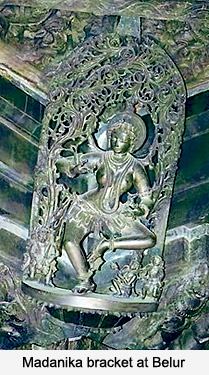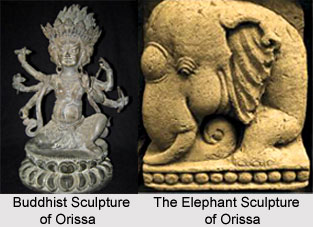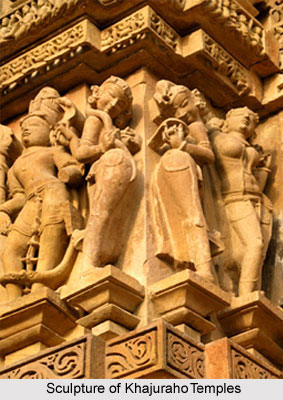 From 11th to 14th centuries the features of the Hoysala sculptures developed. This style of architecture was often referred to as an amalgamation between the Dravidian and Indo-Aryan forms. In this form of architecture too there are different units that have been provided special care.
From 11th to 14th centuries the features of the Hoysala sculptures developed. This style of architecture was often referred to as an amalgamation between the Dravidian and Indo-Aryan forms. In this form of architecture too there are different units that have been provided special care.
One of the main features of Hoysala architecture and sculptures is the mandapa, a common feature of Hoysala architecture. It is the prayer hall that is entered through an intricately designed lintel. This ornamented overhead lintel is known as the `makaratorana.` The seating areas of the mandapas are made up of stone. This open space is one of the largest units within a Hoysala religious shrine. It is supported by several pillars. The ceiling of the mandapa has been adorned with sculptures that arise out of the Indian mythology. Floral sculptures are also not unknown to Hoysala architecture. Besides these the stone latticework is also a recurrent feature of Hoysala sculptures.
The pillars of the Hoysala temples have four brackets at the top. A sculpted figure or salabhanjika or madanika has been placed on each of these brackets. Extra care had been taken so that the carvings of the no two pillars are similar. In fact the pillars in these temples are further decorated with ornamented carvings.
The vimanams are the place where the principal deity resides. The inside of the vimanams are simple but the outside they have been designed with well rendered figurines and carvings. The shapes of these vimanams are either stellate (star shaped) or staggered square. The Hoysala Empire was famous for its sculptural intricacies.
The Salabhanjika is a common feature of Hoysala sculpture. According to the Hoysala style the madanika figures are decorative pieces that are placed on the outer walls of the temples. The sculptures of the madanikas are often seen in a dance posture or playing a musical instrument. Kirthimukhas are found on the towers of the vimanams as well. The artists at times have also left behind their signatures on their creations.
The pillar images known as `sthamba buttalikas` show the influence of the Chola art and architecture. For instance the image of Mohini is a glaring example of the Chola art. The panels on the walls have life themes like musicians, animals, dancers and instrumentalists. Moreover the temple walls of the Hoysala Empire are speckled with events from Hindu epics, Ramayana and Mahabharata. These events have been etched out on the stone walls.
Another feature of the Hoysala sculpture is erotica. The nooks and niches of the temple walls have been filled with erotic themes. The doorway of the temples is designed with Makaratorana while the sideways of the doorways are sculpted with Salabhanjika (maidens). Besides these the friezes are also quite recurrent pattern on the walls of the Hoysala temples.



















